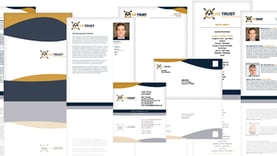When my firm first started hosting workshops, our attendance was average, and the amount of attendees scheduling visits with us was about 40 to 50 percent. Learning five important lessons from workshop prospects increased the number of attendees meeting with us to nearly 80 percent.

Searching for the Problem
When we saw less than half of workshop attendees set appointments, we thought: Maybe it’s the location? Maybe we have a bad list? Maybe we need a better mailer? All of which was possible, but would require months of experimenting to gather enough data to determine which could be responsible for a better response rate. We would have the possibility of ending up with a below average response rate while testing. We could have focused on reducing the no-show rates by improving our confirmation process or trying some clever gimmick to get more people to register. Another option was to spend a lot of time pondering why people register and then don’t show.
Rather than blame the mailer, demographics, list, location, or a number of other external factors, we took a look inward. We asked ourselves what could we improve about ourselves before, during, and after the workshop that would result in more best-fit prospects raising their hands and saying, “I need to meet with these guys!”
We analyzed our behavior and interviewed guests to determine what may prevent someone from scheduling a visit with us. We discovered many critical factors that determine whether or not someone is comfortable enough to schedule a visit. We altered our behavior accordingly and increased our appointment ratio to around 80 percent of the workshop attendees.
What Changed?
So how did we go from 40 to 80 percent? Has our mailing list changed? Nope. Did we change the location? Not at all. Has the content of our mailer or presentation changed? Not really. So what did change? Our behavior.
We learned five lessons from workshop prospects who said "No thank you" when we offered to meet with them. All of the following changes happen in the last 10 minutes of our workshop. Without altering the content of the core message of the presentation, and only making changes to the close of the workshop, we have increased the number of attendees who raise their hands and say "I want to meet with you."
1. Clearly Define Your Call to Action
When faced with something new and unfamiliar, most of us get a little uncomfortable. It can be hard to take the next step when that feeling of uncertainty and anxiety starts to creep in. If you'd like to test this theory, stand on the corner and hand out crisp $100 bills. You'll only need a couple, because most people are going to refuse your offer and move on. Someone standing on the corner handing out money is unfamiliar and uncomfortable enough that the majority will simply pass you by thinking that there must be a catch.
If you want more workshop attendees to meet with you, start by creating clarity about what will happen next. Clearly define the action they should take and what they can expect in return from your team. Extend your hand and guide them to and through those first steps.
We share our entire process with the prospects in our workshops. We have a written planning process beautifully designed and professionally printed in our workshop packets. We also display it during the presentation. We carefully walk them through each step of the process. By the end of that segment of our workshop, everybody in the room knows what will happen next, and this eliminates the hesitation for many that prevents them from taking the first step.
2. Respond to Questions Before They are Asked
Attendees of your workshop are going to have similar thoughts running through their head. Answer them before you're even asked. They will be asking themselves questions like: What is this going to cost? How do you get paid? Are you going to try to sell me something? (I don't want to be sold products.) How can I be sure whether I can trust you or not?
These are a handful of the questions that our appointment setters have been asked after our workshops are over. As they go around to secure visits with the attendees, they hear similar questions time and time again. The feedback that our appointment setters shared with us was vital to adapting the closing of our presentation to address these questions. We address the questions that could prevent someone from moving forward, and we do it before they even have a chance to think about it. Be sure to address each common question in front of the entire audience before the workshop is complete.
3. Identify Who is a Fit
Don't try to be all things to all people. It's not credible, it's not believable, and the only person you're fooling is yourself. At the end of your workshop, make sure to clearly identify the type of people who you are best suited to help. Outline the qualities and the characteristics of someone who is a fit for your organization. Then reverse those qualities and characteristics and identify those who are not a fit for your organization. Leave no blurred lines between who should raise their hand to visit with you, and those who should not waste their time or yours.
4. Clearly State the Objective
Be clear about why you want to meet with the right fit person and why they would want to meet with you. Identify what they can expect to receive in return. In our workshops we identify specifically the type of work that we do and what someone who engages with us can expect to receive in return when we're all done.
We have samples of our complete retirement income blueprint, all of our analysis work, and the final organized folder that they will have when our process is complete. We state that in order to achieve this outcome, they'll have to put in the work as well. We clearly outline the objective of retirement income planning, the work that must be done on their part and on ours, and the end result. If someone doesn't like the end result, won’t put in the work, or doesn't see value in it, then we should probably save both of ourselves some time and not set an appointment.
5. Introduce your team
If you're a proud "lone wolf" you're going to struggle with this one. From our experience, and lessons we've learned engaging with prospects, surrounding yourself with a team matters. It creates perceived value that you are not able to create by yourself. When given the choice, your ideal prospects are going to choose a firm with a well-balanced team supporting their needs over an individual financial professional working without a support network. Your prospects and clients are probably wondering, “if something happens to you, what will happen to us and our plan?” If you haven't been asked the question yet it's just a matter of time. Surrounding yourself with a team reduces the stress and anxiety at the root of their questions.
The more qualified members on your team, the more qualified you are. Therefore you should introduce your entire team. Introduce your internal team members such as your administrative team, marketing team, junior advisers and so on. Anybody who works internally within your firm should be included. We do this on screen during the workshop close.
Next, introduce any of the external experts your firm engages with. In our workshops we introduce the tax planning firm who we refer clients to and our relationship person there. Then we introduce our estate planning firm and the estate-planning attorney who we partner with. We’re careful to represent our relationships accurately, but within the same context as our internal team members. The entire team is working on behalf of our clients. This creates perceived value with our workshop attendees.
There are many facets to hosting successful workshops. From the beginning to the end, the details matter. These five adaptations, from our first workshops to our current workshops, have had a significant impact on increasing the number of attendees who feel comfortable raising their hand and taking the first step with us.
As you know, some prospecting programs work better than others. Request the on-demand webinar to learn about a break-away prospecting opportunity that gives you more qualified people to see. We've thoroughly vetted this program and we know from first-hand experience that it generates results.






